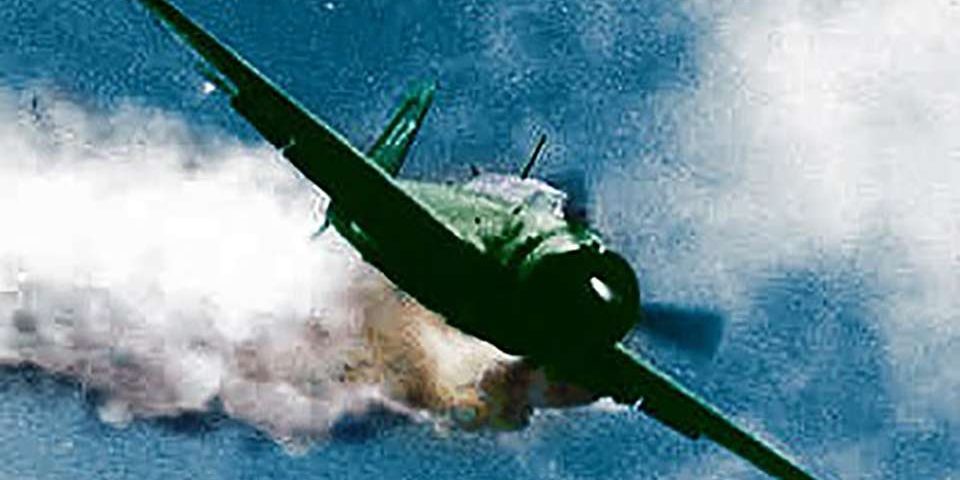Kamikaze Attacks Begin in The Pacific Theater
Contributor: Barry Fetzer
Sources: History.com, Wikipedia
Americans generally find the idea of suicide warriors and weapons, like Kamikazes…or terrorists strapped with bombs…as inconceivable. Some have described it as, “Americans glorify life and those who employ suicide on the battlefield glorify death”. But is that true? Americans “commit” suicide in war too. Medals of honor have been presented posthumously to Marines who dove on grenades, shielding the blast with their bodies to save fellow Marines. And while certainly not a direct comparison to Kamikaze, the 1942 “one way” Doolittle Raid that launched bombers off aircraft carriers, with just enough fuel to reach their targets and skedaddle to avenge the attack on Pearl Harbor, was affectively a suicide mission although many of the airman who volunteered for this mission survived. And they wanted to, hoped to, and believed they could survive.
On October 25, 1944, according to History.com, “during the Battle of the Leyte Gulf, the Japanese deployed kamikaze (“divine wind”) bombers against American warships for the first time. It proved to be costly–to both sides.
“This decision to employ suicide bombers against the American fleet at Leyte, an island of the Philippines, was based on the failure of conventional naval and aerial engagements to stop the American offensive. Declared Japanese naval Capt. Motoharu Okamura: “I firmly believe that the only way to swing the war in our favor is to resort to crash-dive attacks with our planes…. There will be more than enough volunteers for this chance to save our country.”
“The first kamikaze force was in fact composed of 24 volunteer pilots from Japan’s 201st Navy Air Group. The targets were U.S. escort carriers; one, the St. Lo, was struck by a A6M Zero fighter and sunk in less than an hour, killing 100 Americans. Japanese pilots took down 34 ships in the gulf battle.
“For their kamikaze raids, the Japanese employed both conventional aircraft and specially designed planes, called Ohka (“cherry blossom”) by the Japanese, but Baka (“fool”) by the Americans, who saw them as acts of desperation. The Baka was a rocket-powered plane that was carried toward its target attached to the belly of a bomber.”
From Wikipedia: “The Yokosuka MXY-7 Ohka (櫻花, Ōka, “cherry blossom”; 桜花 in modern orthography) was a purpose-built, rocket-powered human-guided kamikaze attack aircraft employed by Japan against Allied ships towards the end of the Pacific War during World War II. Although extremely fast, the very short range of the Ohka meant that it had to be carried into action as a parasite aircraft by a much larger bomber, which was itself vulnerable to carrier-borne fighters. In action during the Battle of Okinawa in 1945, Ohkas were able to sink or damage some escort vessels and transport ships but no major warships were ever sunk. Improved versions which attempted to overcome the aircraft’s shortcomings were developed too late to be deployed.”

US personnel disarming the warhead of an Ohka, Yontan Airfield, Okinawa, April 1945 (Public Domain).
From History.com: “All told, more than 1,321 Japanese aircraft crash-dived their planes into Allied warships during the war, desperate efforts to reverse the growing Allied advantage in the Pacific. While approximately 3,000 Americans and Brits died because of these attacks, the damage done did not prevent the Allied capture of the Philippines, Iwo Jima and Okinawa.”







